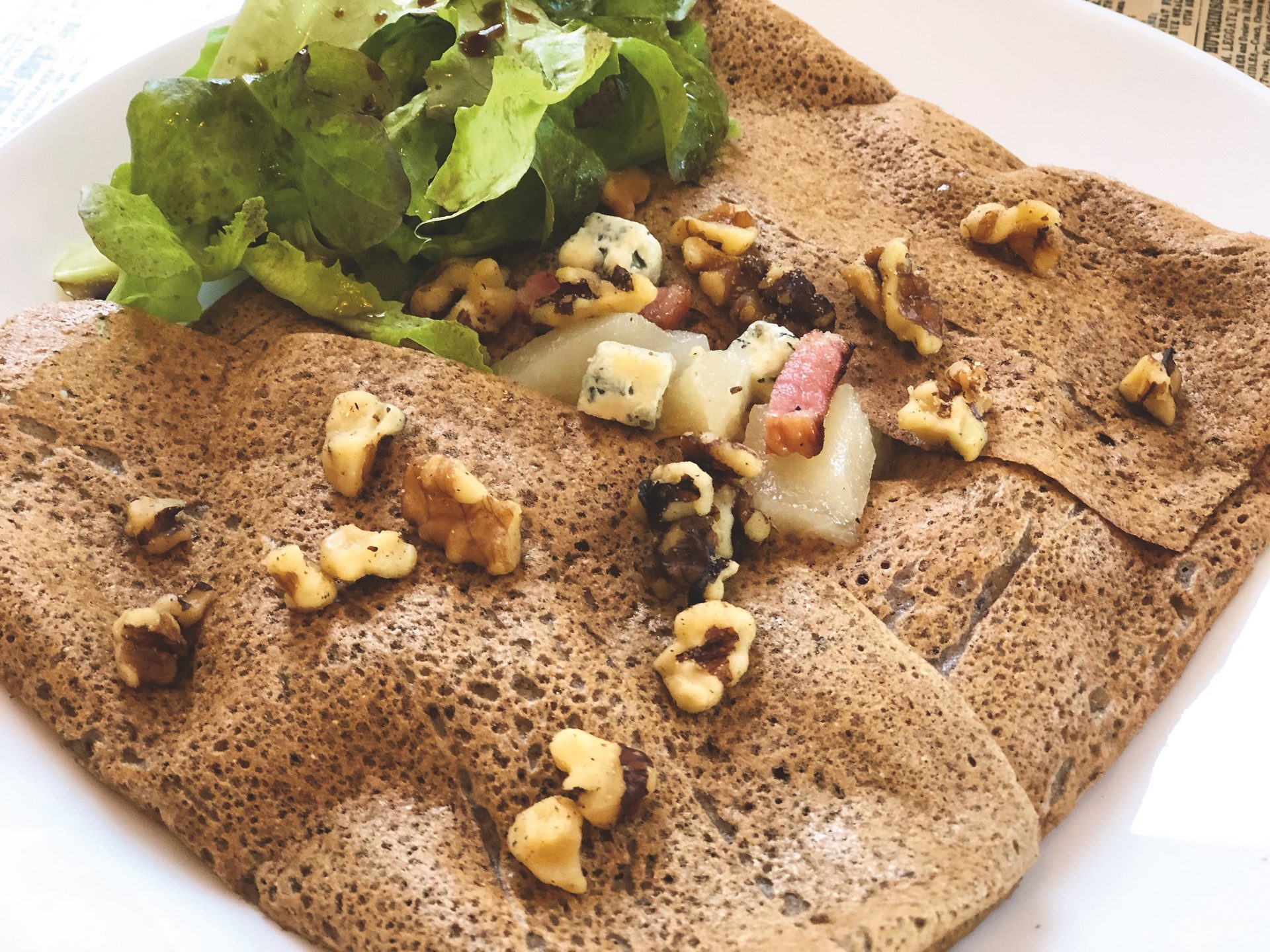Rock My World
Take a trip from Newfoundland’s capital to a rocky remnant of France.
St. John's is a delightful mix of contradictions and complements— large enough to offer plenty of diverse, vibrant food and cultural scenes, yet small enough to explore by foot in a couple of hours.
Between the colour-pop houses of Jellybean Row and the possibility of spotting icebergs, seals and spouting whales near coastal trails, this city had me hooked right from my first visit.
The streets of St. John’s are built at angles fit for ski slopes, and the weather gods cycle through every season most days, but nothing stops the locals from getting out and having fun. Live music festivals, wharf-fresh seafood and friendly banter at every turn keep visitors coming back year after year. For this trip, I’m eager for new experiences at rural spots just outside of the city and an excursion to Saint-Pierre and Miquelon—two pebbles on a rocky archipelago off the coast of Newfoundland.

St John and Beyond
One of the best ways to get to know a place is through its food, and so I start off by venturing down to dine bar-side at Terre, a restaurant that’s located conveniently (for me), in the lobby of the Alt Hotel, where I am staying. Chef Matthew Swift, whose pedigree includes stints at Montreal’s Joe Beef and Le Vin Papillon, helms the kitchen and is committed to the wild, farmed and fished resources of the region. The herbs, garnishes and greens are as local as it gets— Swift grows them on the hotel deck in his greenhouse and garden.
To delve deeper into Newfoundland’s foodways, I take a 45-minute drive to Lori McCarthy’s woodland home, in Mobile, on the Avalon Peninsula. McCarthy is a forager, outdoorswoman, award-winning author and host of the culinary-adventure TV show The East Coast Forager. Her Food Culture Place residencies get people rolling up their sleeves to try everything from pickling to butchery to campfire-making—with lots of stories and sampling along the way.

Shortly after my arrival, McCarthy hands me an antique teacup (her grandmother’s) to fill with an infusion of my own choosing. Her red setter, Tessa, looks on as McCarthy and I chat while preparing a lunch spread of stove-top beans, golden-topped cod cakes and warm baked goods with tart partridgeberry jam. Also nearby is Petty Harbour—only 15 minutes away and the birthplace of award-winning musician and Great Big Sea frontman Alan Doyle. These days, it’s home to Janet Harron, a craft-vinegar maker who gives heritage tours. Harron strides through Petty Harbour in combat pants, her long silver hair flying from beneath a bucket hat, as she shares insider stories of community life.
We take in the bridge that once divided Catholic and Protestant residents and the Fishing for Success building, where wooden boat and handline fishing traditions are kept alive. Our tour ends inside the Petty Harbour Fisherman’s Co-Operative Society building, where Janet makes her stout-fed vinegar. I sample the sharp and caramelly condiment, while looking at black and white photos of local scenes, including cheeky kids cutting cod tongues at the fish plant for pocket money.

That evening, I have reservations at Portage, a new St. John’s restaurant opened by alumni from Raymonds, the recently shuttered fine-dining spot that put Newfoundland cuisine on the world map. The Portage menu draws on the Asian culinary heritage of chef Celeste Mah, as well as the local sensibilities of Newfoundland-born-and-raised Ross Larkin, season 6 winner of Top Chef Canada.
Here, the kelly green dining room is homey, the servers chatty, and the dishes made for sharing. On my last day in the city, I go shopping. At St. John’s Farmers’ Market, I browse stamped butter knives, cardamom- infused sugar cubes and colourful hand-stitched journals. Later, I head downtown to Rosemill Antiques & Collectibles, on the recommendation of friends.
We sell everything here, from a baby’s fart to a clap of thunder.
Rick Clarke - Rosemill Antiques & Collectibles
Clearly, this place is full of treasures—just like the city itself.
Eat
Portage
128 Water St.
Visit website
Mais, Oui!
Three days on the French islands of Saint-Pierre and Miquelon.
After a 45-minute flight from St. John’s (Canadians don’t need a passport, just valid photo ID), I arrive at my hotel in Saint-Pierre. Les Terrasses du Port SPM looks out to a bustling harbour—only this time, with French flags and names like Marcel and Marie painted on the boats.
Saint-Pierre is the smaller of the two main islands in this self-governed, French-owned archipelago. It’s also the most urban—in the loosest sense of the word—with a population of about 5,300.
Summer visitors to these islands include dolphins, orcas and puffins—as well as francophiles eager to spend their euros on fresh-baked croissants and stinky cheeses.
Saint-Pierre and Miquelon had its heyday during Prohibition, when islanders supplied booze from their “wet” French territory to be smuggled to the dry U.S.A. Today tourism and fishing are the main economic drivers.
Keen to understand the history of this distinctive place, I start my visit at Le Musée de l’Arche. My legs tremble as I stand by a guillotine as tall as an NBA star and listen to my guide recount the sole public execution in these parts. It was the first and last guillotine execution in North America.
I examine stone microblades, chiselled for skinning animals, as I read about the Indigenous peoples who came to hunt, fish and gather here millennia ago. And I take in treasures recovered from some of the 700- plus shipwrecks on record from the past 200 years—the North Atlantic doesn’t play around on stormy days.
Later that day, crossing lichen-covered rocks over tree-less terrain, I’m able to put the history and culture of this place into its geographical context, thanks to my guide, Gilles Gloaguen, of Escapade Insulaire.
As I take in undulating landscapes carved by melting glaciers, Gloaquen points out a soaring trio of bald eagles. We pick wild cranberries as we hike and chat about the fishing grounds, the semi-wild horses that roam in herds, the challenges of farming on a rock, and the presence of white-tailed deer and snowshoe hares that were introduced for hunting.
To get a taste of local heritage crafts, I spend my final morning at Chez Rika Simon, a studio-boutique redolent of leather and sparkling with handcrafted necklaces and earrings.
While Erika Simon tells me all about the elderly lady who was Saint-Pierre and Miquelon’s last fish-leather tanner, I pick out pieces of cod-and calfskin for a craft project.
Next, I learn to trace, cut and stitch the leather to create my own luggage tag. Simon’s love of reviving traditional techniques and materials to make contemporary objects ties into a bigger dream for this young mother of two—keeping the distinctive local culture alive and relevant.
When her kids run through the door at noon (the whole island stops for lunch en famille, French-style), I can’t help thinking they have the best of all worlds.
Where to Eat in Saint-Pierre
Before heading out for a meal, make reservations, as restaurants here tend to get fully booked. And they keep French hours—noon to 1:30 p.m., then, 7 p.m. onwards—so plan your day accordingly.
- In the wood-panelled bistro Les P’tits Graviers, the crispy-edged beef entrecôte comes with pan-fried potatoes and melted-Roquefort dipping sauce so tasty I mopped up every last smear.
- Le Feu de Braise serves the silkiest crème brûlée, whose torched top shatters satisfyingly at the tap of a spoon.
- Meanwhile, perfect for a late petit déjeuner, Roc Café offers up paper-thin buckwheat crepes filled with molten goat cheese, locally cured bacon and a sunnyside-up egg, then folded like origami.



